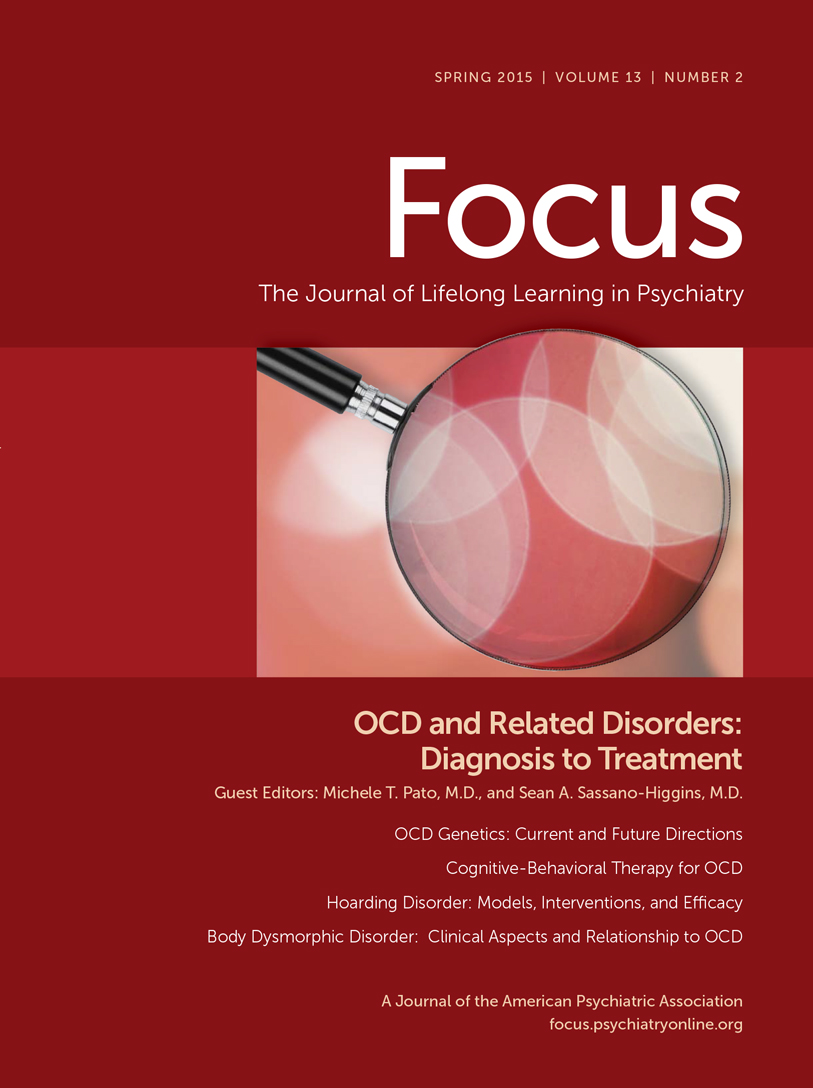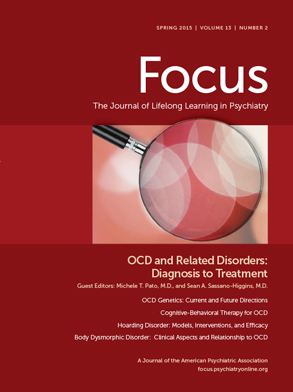Deep Brain Stimulation in the Treatment of Obsessive-Compulsive Disorder
Abstract
Background:
Methods:
Results:
Conclusions:
Introduction
Studies and Methods
DBS
DBS in the Treatment of Ocd
Pathophysiology
Clinical Studies
| Author | Patients/Procedures | Complications of Surgery/Stimulation | Results and Comments |
|---|---|---|---|
| Greenberg et al., 2010 (25) | 26 patients Bilateral VC/VS | Adverse events of interest: 1 asymptomatic ICH, 1 ICH with transient apathy, 1 seizure, 1 wound infection, 2 hardware-related complications, stimulation-induced reversible effects, including hypomania | Several subgroups; varying follow-up (minimum 3 months, mean 24 months). |
| YBOCS reduced by 38% after 3 months and after 3 years. Anxiety and depressive symptoms reduced by half at last follow-up. | |||
| The target was changed during the study, which improved the results. In the last 17 patients, YBOCS was improved by 54% at last follow-up (72% >35% improvement). | |||
| Greenberg et al., 2006 (26) | 10 patients included in Greenberg et al. (25) | ||
| Goodman et al., 2010 (24) | 5 of the 6 patients included in Greenberg et al. (25) | Double-blind staggered onset. | |
| Okun et al., 2006 (53) | 5 patients included in Greenberg et al. (25) and Goodman et al. (24) | ||
| Burdick et al., 2010 (15) | 1 patient included in Greenberg et al. (25), Goodman et al. (24), and Okun et al. (53) | ||
| Shapira et al., 2006 (65) | 1 patient included in Greenberg et al. (25), Goodman et al. (24), and Okun et al. (53) | ||
| Springer et al., 2006 (67) | 1 patient included in Greenberg et al. (25), Goodman et al. (24), and Okun et al. (53) | ||
| Okun et al., 2004 (52) | 1 patient included in Greenberg et al. (25), Goodman et al. (24), Okun et al. (53), and Springer et al. (67) | ||
| Nuttin et al., 2003 (51) | 4 patients included in Greenberg et al. (25); 2 other patients with poor results briefly mentioned | Double-blind crossover in 4 patients. | |
| Gabriëls et al., 2003 (23) | 3 patients included in Greenberg et al. (25) and Nuttin et al. (51) | ||
| Nuttin et al., 1999 (50) | 4 patients included in Greenberg et al. (25), Nuttin et al., (51) and Gabriëls et al. (23) | ||
| Abelson et al., 2005 (1) | 4 patients Bilateral IC | 1 electrode breakage 1 suicide not considered to be caused by the therapy | Double-blind crossover; follow-up 4 to 23 months. |
| The largest reduction of YBOCS during the follow-up period was a mean 29.8%. Two patients responded with 57.6% reduction. | |||
| Anderson et al., 2003 (4) | 1 patient Bilateral IC | None | YBOCS reduced by 81.1% after 3 months. |
| Sturm et al., 2003 (68) | 3 NA unilateral right 1 NA bilateral | None | “Nearly total recovery from both anxiety and OCD symptoms” in 3 patients. |
| Huff et al., 2010 (32) | 10 patients Unilateral right NA | Adverse events of interest: 4 stimulation-induced reversible agitation/anxiety, 1 affection of memory/concentration, 2 hypomania, 1 temporary suicidal thoughts not clearly related to DBS | Double-blind crossover. YBOCS reduced by a mean 21% after 1 year (1 responder with >35% improvement). Anxiety and depressive symptoms reduced by 29% and 23%, respectively. |
| Plewnia et al., 2008 (55) | 1 patient Unilateral right NA | Wound infection | OCD and residual schizophrenia. YBOCS reduced by 25% after 1 year. |
| Franzini et al., 2010 (22) | 2 patients Bilateral NA | None | YBOCS reduced with by a mean 38% after about 2 years. |
| Denys et al., 2010 (17) | 16 patients Bilateral NA | Adverse events of interest: 1 wound infection, 8 stimulation-induced mild reversible hypomania, 5 mild forgetfulness, 3 mild word-finding problems, 7 increased (normalized?) libido | Double-blind crossover. YBOCS reduced by a mean 47% after 1 year; 52% after 21 months (9 responders with a mean reduction of 72%). Anxiety and depressive symptoms reduced by half. |
| Mantione et al., 2010 (45) | 1 patient included in Denys et al. (17) | ||
| Guehl et al., 2008 (27) | 3 OCD Bilateral NA/NC | None | YBOCS reduced by 35% to 60% after 1 year. |
| Aouizerate et al., 2004 (6) | 1 patient included in Guehl et al. (27) | ||
| Aouizerate et al., 2005 (7) | 1 patient included in Guehl et al. (27) and Aouizerate et al. (6) | ||
| Aouizerate et al., 2009 (5) | 2 patients included in Guehl et al. (27) and Aouizerate et al. (6, 7) | ||
| Jiménez-Ponce et al., 2010 (33) | 5 patients | Only stimulation-induced reversible side effects | Three patients had addiction, 1 schizoid personality. YBOCS reduced by 49% after 12 months. |
| Mallet et al., 2008 (42) | 17 patients Bilateral STN | Adverse events of interest: 1 ICH with permanent finger palsy, 2 infections, 1 transient clumsiness and diplopia Stimulation-induced reversible side effects, including hypomania | Double-blind crossover. YBOCS reduced by 41% after 3 months of active stimulation. |
| Piallat et al., 2011 (54) | 9 patients, of which 3 were included in Mallet et al. (42) | Analysis of neuronal firing. No clinical data. | |
| Mallet et al., 2002 (41) | Beneficial effect of STN DBS in Parkinson disease reported in 2 patients with concomitant OCD. | ||
| Fontaine et al., 2004 (20) | Beneficial effect of STN DBS in Parkinson disease reported in 1 patient with concomitant OCD. |
| Greenberg et al., 2008 (25) | Huff et al., 2010 (32) | Denys et al., 2010 (17) | Mallet et al., 2008 (42) | Jiménez-Ponce et al., 2010 (33) | |
|---|---|---|---|---|---|
| Target | VC/VS | Unilateral right NA | NA bilateral | STN | ITP |
| Coordinates | Gradually changed from 15 mm anterior of AC to within 1 to 2 mm of the posterior border of the AC, further somewhat more medially and more inferior to include most often the caudal NA | Visual targeting based on the IC and the band of Broca | 3 mm anterior of the anterior border of AC, laterality 7 mm, 4 mm inferior of ICL | “2 mm anterior to and 1 mm medial to the target that is used in patients with Parkinson’s disease” | 3.5 mm lateral to the wall of the 3rd ventricle, 5 mm behind the AC, at the AC-PC-plane |
| Number of patients | 26 | 10 | 16 | 16 | 5 |
| Male/female | 14/12 | 6/4 | 9/7 | 9/7 | 3/2 |
| Age at onset (years) | 15.1 | 14.2 | |||
| Duration (years) | 22 | 22.2 | 28.4 | 17 | |
| Age at surgery (years) | 37.1 | 36.3 | 42.6 | 43.8 | 37 |
| Evaluation presented here | Last follow-up, after a mean 24 months | 12 months | 12 months | 3 months of active stimulation | 12 months |
| YBOCS preoperative/postoperative | 34.0/∼21 | 32.2/25.4 | 33.7/17.8 | 32.1/19 | 35/17.8 |
| HDRS preoperative/postoperative | 52.8% reduction | HDRS: 21.6/16.6 | HDRS-17: 19.5/10.3 | ||
| HAMA preoperative/postoperative | 50.0% reduction | 21.2/15.0 | 20.9/9.7 | ||
| GAF preoperative/postoperative | 34.8/59.0 | 36.6/53.1 | 31.6/56 | 18/72 | |
| SDSS preoperative/1 year | 8.6/4.8 | ||||
| Stimulation parameters | Monopolar, 2 to 3 contacts, 4.5 to 6.5 V, 90 to 140 μS, 145 Hz | Monopolar, 2 contacts, 3.5 to 5 V (mean 4.3), 90 μS, 130 Hz | 27 electrodes monopolar, 2 bipolar, 2.0 V | Bipolar, 5.0 V, 450 μS, 130 Hz | |
| Number of responders | 61.5% | 1/10 | 9/16 |
Patients
Results
Complications
Discussion
References
Information & Authors
Information
Published In
History
Authors
Metrics & Citations
Metrics
Citations
Export Citations
If you have the appropriate software installed, you can download article citation data to the citation manager of your choice. Simply select your manager software from the list below and click Download.
For more information or tips please see 'Downloading to a citation manager' in the Help menu.
View Options
View options
PDF/EPUB
View PDF/EPUBLogin options
Already a subscriber? Access your subscription through your login credentials or your institution for full access to this article.
Personal login Institutional Login Open Athens loginNot a subscriber?
PsychiatryOnline subscription options offer access to the DSM-5-TR® library, books, journals, CME, and patient resources. This all-in-one virtual library provides psychiatrists and mental health professionals with key resources for diagnosis, treatment, research, and professional development.
Need more help? PsychiatryOnline Customer Service may be reached by emailing [email protected] or by calling 800-368-5777 (in the U.S.) or 703-907-7322 (outside the U.S.).

